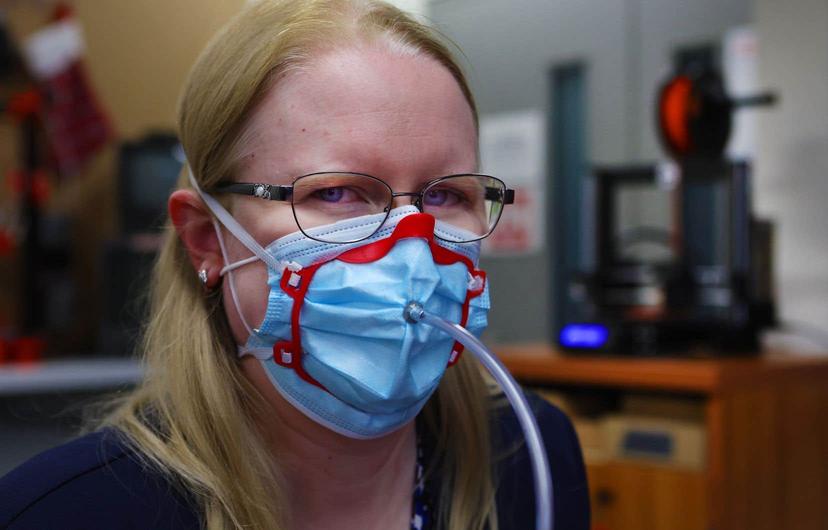More effective surgical masks against COVVI-19 receive the last hour alerts of duty
A researcher from Concordia University found a means within everyone's reach to improve the protection offered by surgical masks: 3D printed executives.
During the first wave of the COVVI-19 pandemic, when various planet care centers lacked personal protective equipment, Nathalie Duponsel wanted to take advantage of her interest in 3D printers.On the Thingiverse web platform, she found the creation of a young woman named Shiuan.The latter had published instructions to make them at home.
"These are executives who take about 20 minutes to print and which are offered in four quantities.You then dip them in hot water, which makes them soft, and you can mold them on your face. Vous ajoutez un élastique pour qu’ils tiennent et vous les portez par-dessus un masque chirurgical certifié », explique Mme Duponsel, qui est enseignante au primaire et chercheuse en technologies éducationnelles.
Mme Duponsel et une équipe de cinq autres chercheurs ont voulu voir si ce cadre en plastique pouvait permettre de protéger adéquatement les travailleurs de première ligne en cas de pénurie de respirateurs N95.

“Certified surgical masks filter 95 %contaminants, like N95, but as they are not well adjusted to the face, they cannot be so effective.There are spaces through which air can pass.By adding a frame, we thought it would be possible to create a seal and to force all the air to go through the filter, "she said.
Test
Pour tester le procédé, Mme Duponsel et ses collègues ont utilisé une machine PortaCount.In hospitals, it is used to check that the size of the N95 mask worn by each health worker is appropriate.
"We send particles to the air while a person carries the mask and the framework. À l’aide d’un tube à l’extérieur et un tube à l’intérieur du masque, la machine mesure la quantité de particules des deux côtés », décrit Mme Duponsel.
The results with a frame and different models of surgical masks have been very conclusive: the system filtered as many particles as the N95.The researcher underlines that the use of N95 remains preferable, when possible, since the latter are rigorously tested for use in different contexts and to ensure their long -term effectiveness."But if the N95 is not available, it's an option," she said.
Mme Duponsel précise également que les cadres ne permettent pas d’améliorer l’efficacité des masques en tissu."The fabric masks filter almost nothing," she reports.These masks have the function of protecting people around rather than those who wear them.The researcher also underlines that it is not all the disposable masks that are certified.
Pour les citoyens qui souhaiteraient produire leurs propres cadres en plastique, Mme Duponsel a publié des instructions en ligne.To have them printed, it is possible to go to public libraries, which are many to put 3D printers available to all.The Fab Labs workshops are also a good resource on this subject, she believes.
La recherche de Mme Duponsel et de ses collègues doit être publiée sous peu dans une revue scientifique.However, she does not intend to continue her work on this subject.It plans to focus on the development of educational materials for visually impaired and blind children, especially with 3D printers.
This content is carried out in collaboration with Concordia University.
How to Get Free N95 Masks from the US Government
GO
Codeco of December 3, 2021: the new measures target schools, masks, events, but not the horeca
GO
Sunburn: how to make up for the damage? - Miss
GO
Beauty coaching: can I apply oil if I have oily skin?
GO